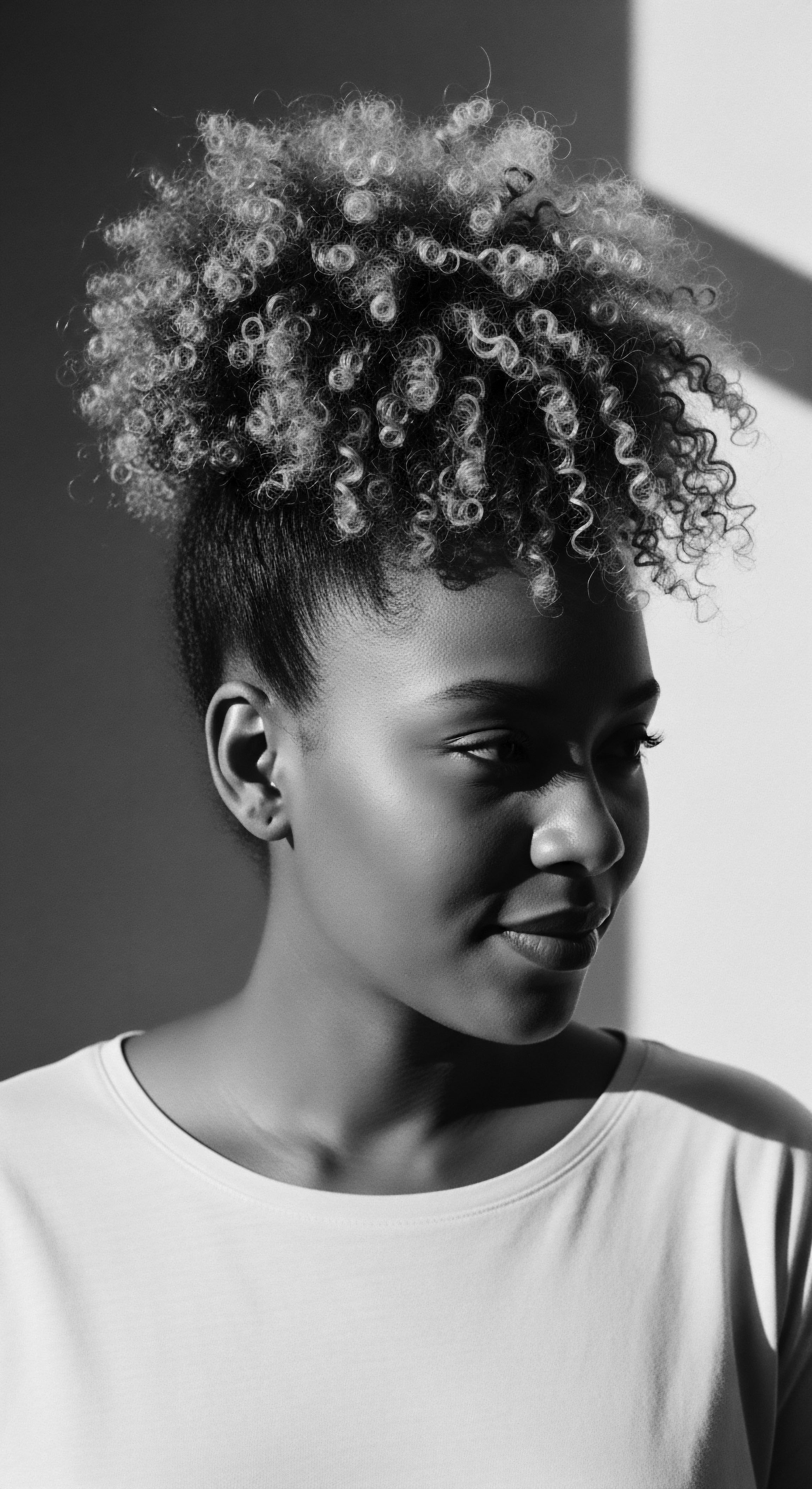
Fundamentals
The concept of Textured Hair Integrity stands as a cornerstone in understanding the unique needs and profound heritage of coily, kinky, and curly hair types. At its simplest, the Definition of Textured Hair Integrity refers to the holistic soundness and optimal condition of each individual strand, from its root to its tip. This includes its inherent strength, its capacity for moisture retention, its spring and resilience, and its overall appearance of vitality.
It is a declaration of hair in its most robust and authentic state, a state where its natural patterns are allowed to flourish without compromise. This initial explanation sets the stage for a deeper appreciation of what it means for textured hair to exist in its complete, healthy form.
The Meaning of this integrity extends beyond mere physical attributes. For communities with textured hair, particularly those of Black and mixed-race descent, it carries a deep cultural resonance. The hair, with its distinct coil and curl, is a living artifact, a direct connection to ancestral lineages and a testament to enduring resilience.
When we speak of integrity, we are also acknowledging the historical journey of these hair types, recognizing the traditional practices that preserved them, and understanding the societal pressures that sought to diminish their inherent beauty. The physical well-being of the hair, therefore, becomes inseparable from its cultural and historical significance.
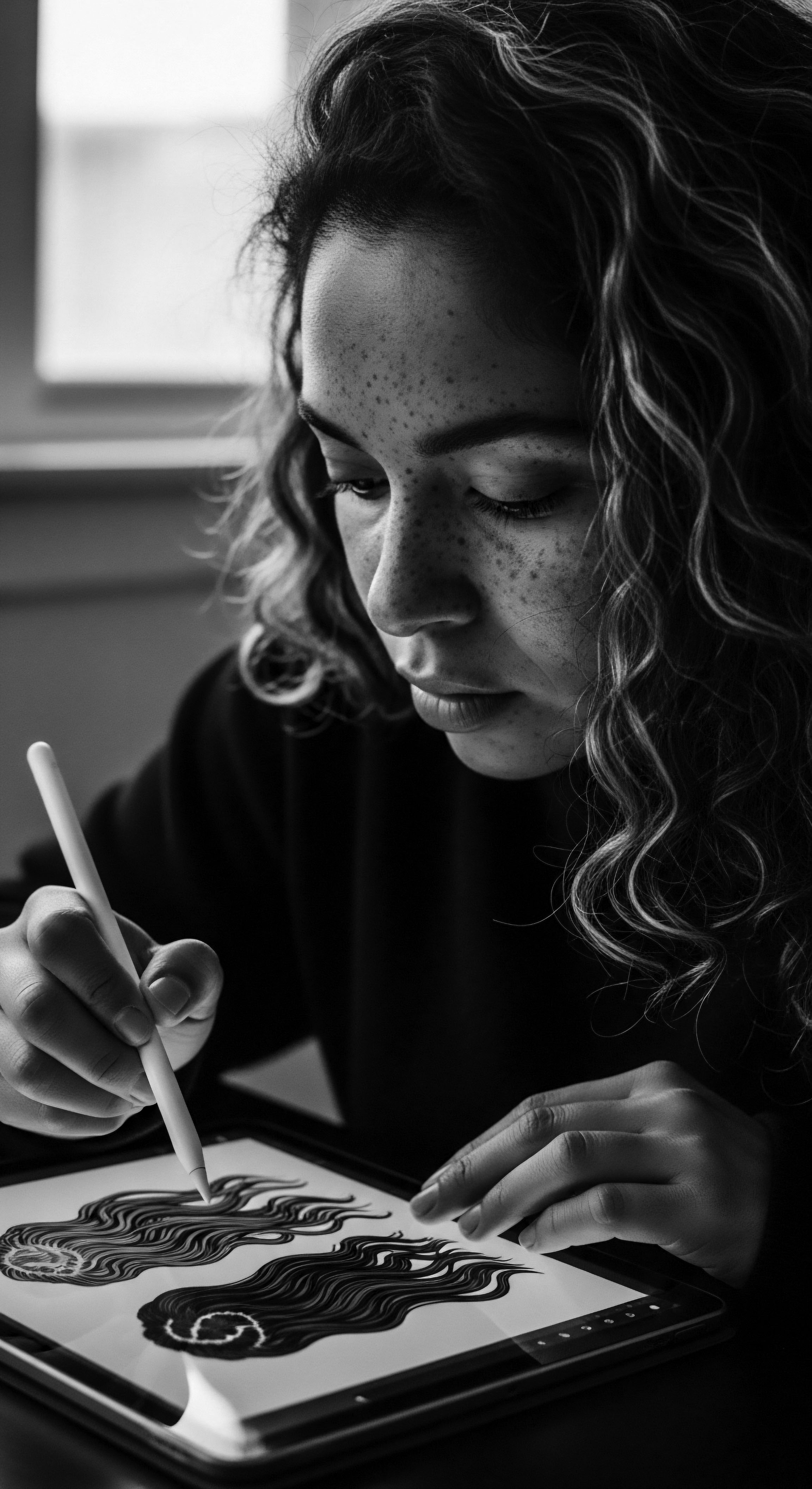
The Core Elements of Hair Soundness
To fully grasp Textured Hair Integrity, one must consider its foundational components. These elements work in concert to uphold the hair’s inherent characteristics and ensure its continued health.
- Structural Resilience ❉ This refers to the hair shaft’s ability to withstand external stressors, such as manipulation, environmental exposure, and styling, without breaking or experiencing significant damage. Afro-textured hair, with its elliptical cross-section and numerous twists, naturally possesses points of weakness that necessitate specific care to maintain its structural soundness.
- Moisture Balance ❉ Coily and curly hair tends to be naturally drier than other hair types due to its structure, which makes it harder for natural oils from the scalp to travel down the strand. Maintaining optimal moisture levels is paramount for elasticity and softness, preventing brittleness and breakage.
- Elasticity and Spring ❉ Healthy textured hair exhibits a lively spring, allowing it to stretch and return to its original shape without snapping. This quality speaks to the internal health of the keratin structure and its capacity to adapt.
- Cuticle Smoothness ❉ The outermost layer of the hair, the cuticle, when properly laid and smooth, protects the inner cortex, minimizes tangling, and contributes to the hair’s luster and softness.
These physical attributes are not isolated from the cultural context. Traditional hair care practices, passed down through generations, instinctively addressed these very needs, long before modern science provided its detailed explanations.
Textured Hair Integrity represents the complete well-being of coily, kinky, and curly strands, honoring their biological characteristics and their profound cultural significance.
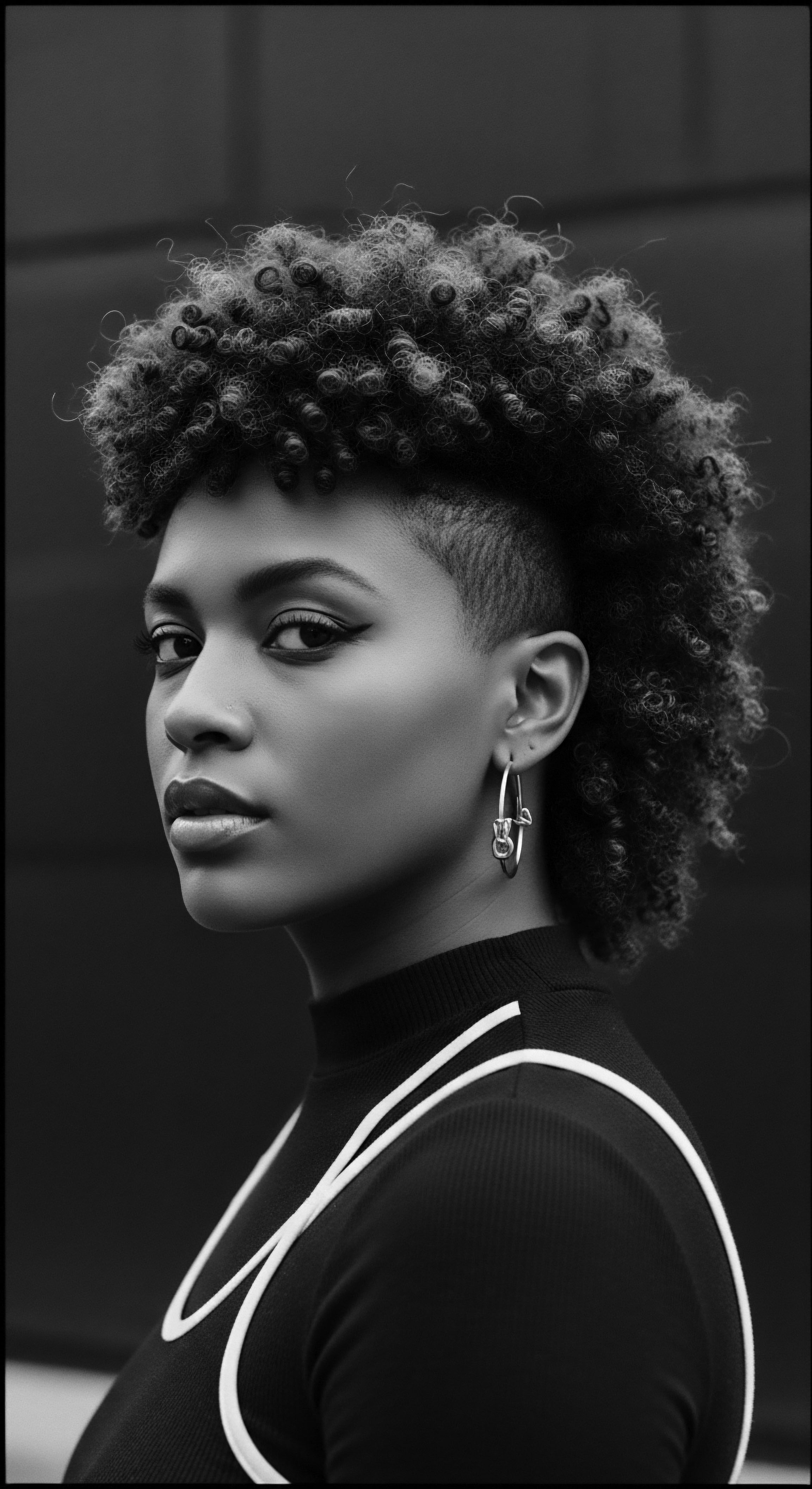
Early Perceptions and Ancestral Wisdom
From ancient times, communities across Africa held hair in high regard, viewing it as a powerful symbol of identity, status, and spiritual connection. Hair was not merely an aesthetic feature; it served as a language, communicating geographic origin, marital status, age, and even one’s social rank. The intricate styling processes, often taking hours or days, were communal rituals, fostering bonds among family and friends. This deep reverence naturally led to the development of sophisticated care practices aimed at preserving the hair’s vitality and strength.
Ancestral knowledge, often transmitted orally and through practice, formed the bedrock of Textured Hair Integrity. Indigenous ingredients like natural butters, herbs, and powders were regularly applied to maintain moisture and overall hair health. For instance, the women of Chad have long used Chebe Powder, a unique blend of seeds, to reduce breakage and promote length retention by sealing the hair shaft.
This ancient wisdom, rooted in observation and deep connection to the natural world, intuitively understood the specific requirements of textured hair to keep it robust and vibrant. These historical practices were not just about appearance; they were about maintaining the integrity of a vital aspect of self and community.
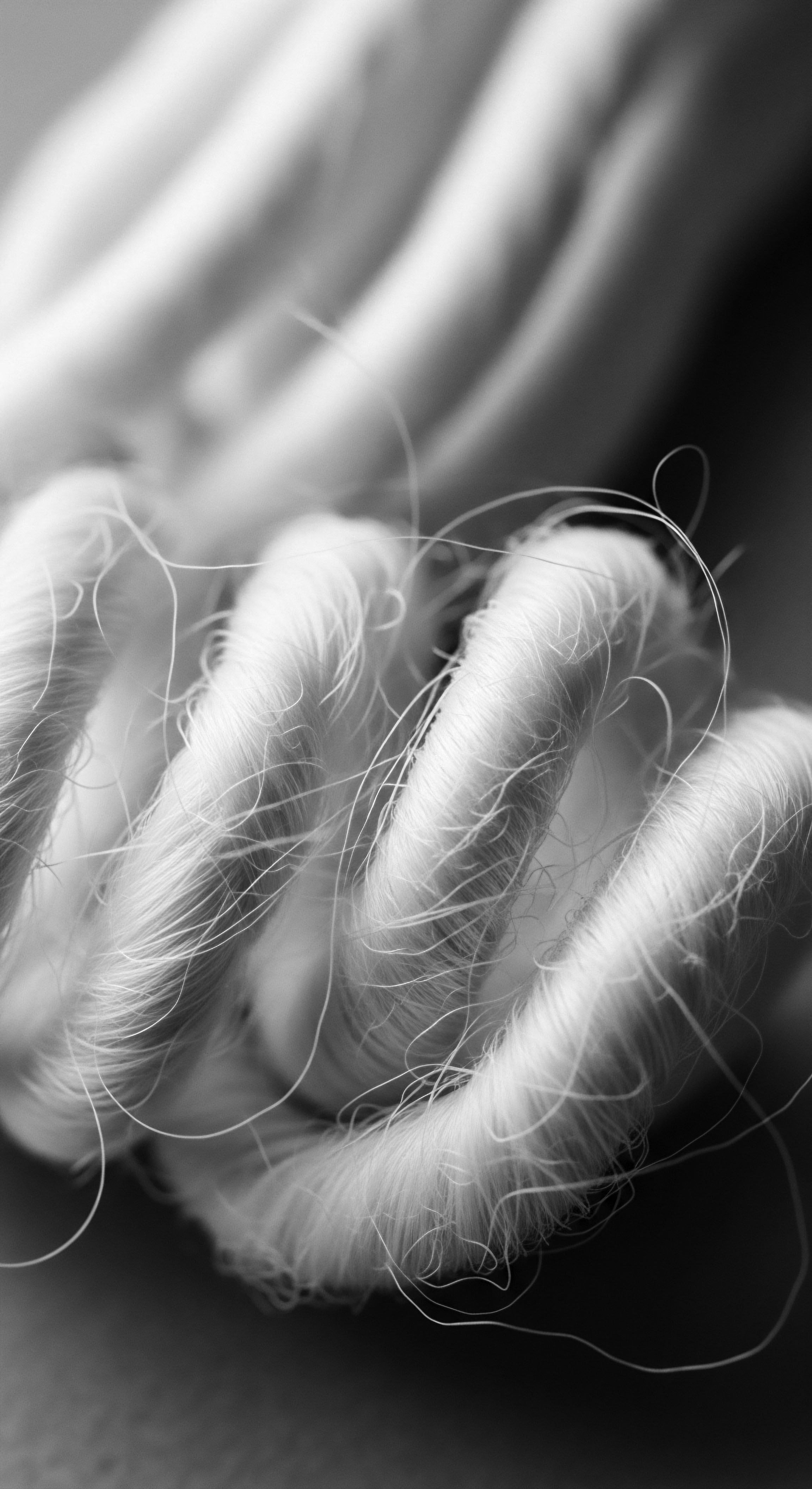
Intermediate
Building upon the fundamental understanding, the intermediate Description of Textured Hair Integrity delves into the interwoven biological realities and the enduring legacy of care that defines it for coily, kinky, and curly hair. It is the optimal state where the hair’s inherent structural qualities—its unique helical shape, its varied diameter along the strand, and its natural tendency to coil—are fully supported and protected, allowing it to flourish without compromise. This level of understanding acknowledges that textured hair, while chemically similar to other hair types, possesses distinct morphological features that demand specialized attention to maintain its soundness.
The Significance of this integrity for Black and mixed-race hair experiences cannot be overstated. It speaks to a journey through time, from the intricate styling rituals of pre-colonial Africa to the contemporary natural hair movement. Hair integrity becomes a metaphor for cultural preservation, a visible link to a heritage that has often been challenged but consistently reclaimed. The health of the hair reflects not only individual well-being but also a collective assertion of identity and a connection to ancestral wisdom.
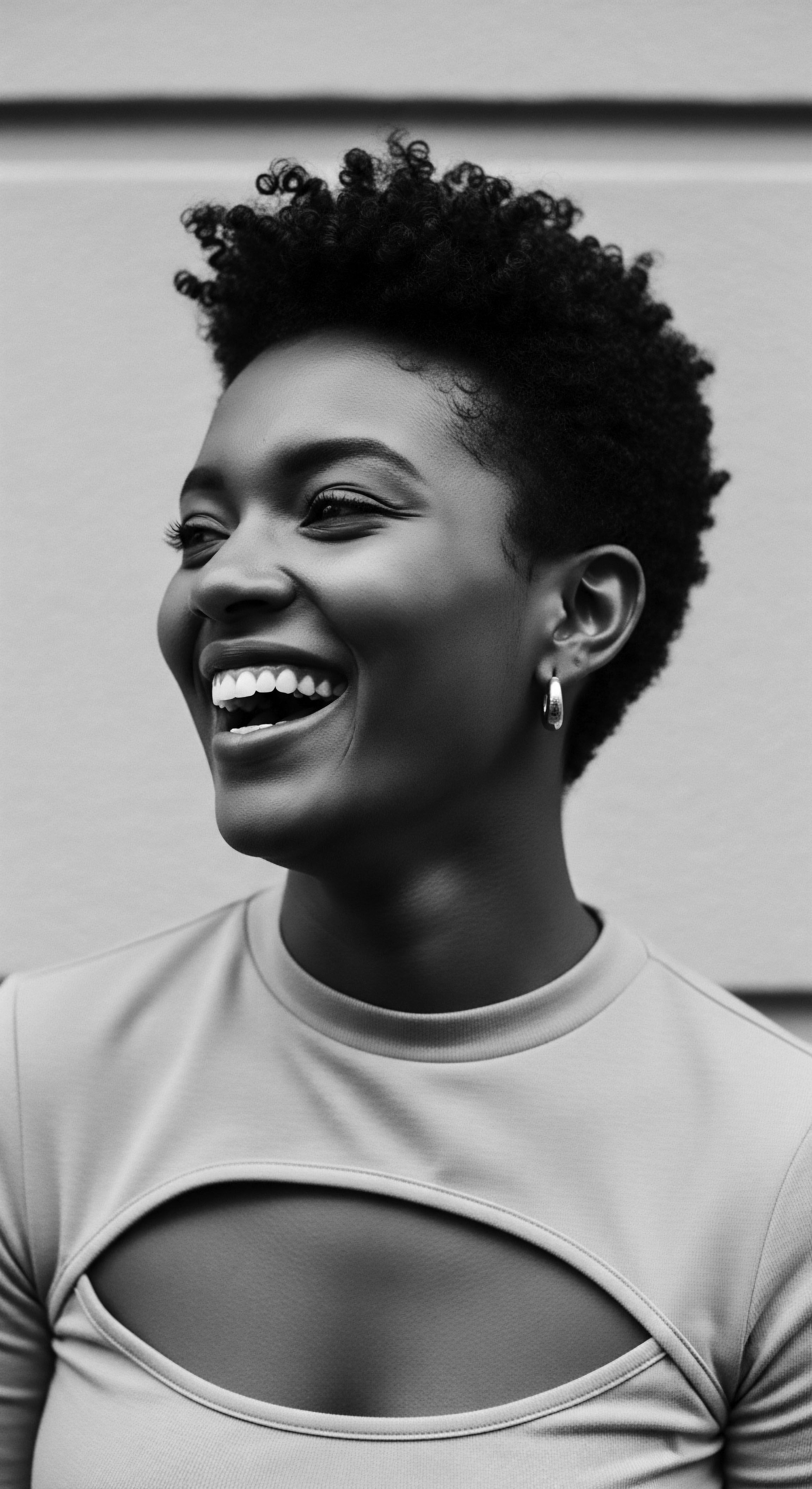
The Science of the Coil and Its Care
At a microscopic level, the unique characteristics of textured hair contribute to its inherent beauty, yet also present specific vulnerabilities that affect its integrity. The elliptical cross-section of the hair shaft and the multiple twists along its length mean that textured hair has a lower tensile strength compared to straight hair, making it more prone to breakage. This biological reality underscores the historical practices that intuitively focused on gentle handling and protective styling.
Maintaining the integrity of textured hair involves a nuanced understanding of its needs, often mirroring traditional methods that predated modern scientific inquiry.
- Lubrication and Sealing ❉ The natural oils produced by the scalp struggle to travel down the highly coiled strands, leading to dryness. Ancestral practices frequently involved applying plant-based oils and butters to seal in moisture, a practice now understood to coat the cuticle and reduce water loss.
- Reduced Manipulation ❉ Frequent combing and styling can stress the hair, leading to breakage at its weaker points. Protective styles, such as braids, twists, and threading, historically minimized daily manipulation, allowing the hair to rest and retain length.
- Gentle Cleansing ❉ Harsh cleansers can strip the hair of its precious moisture. Traditional methods often involved milder, natural cleansing agents or simply water, followed by conditioning treatments.
These practices, developed through generations of lived experience, provided effective strategies for preserving the structural and moisture integrity of textured hair, long before terms like “tensile strength” or “cuticle layer” entered common parlance.
Textured Hair Integrity is a testament to the sophisticated understanding of hair needs cultivated through generations of ancestral practices, affirming the inherent strength and beauty of coily and curly strands.
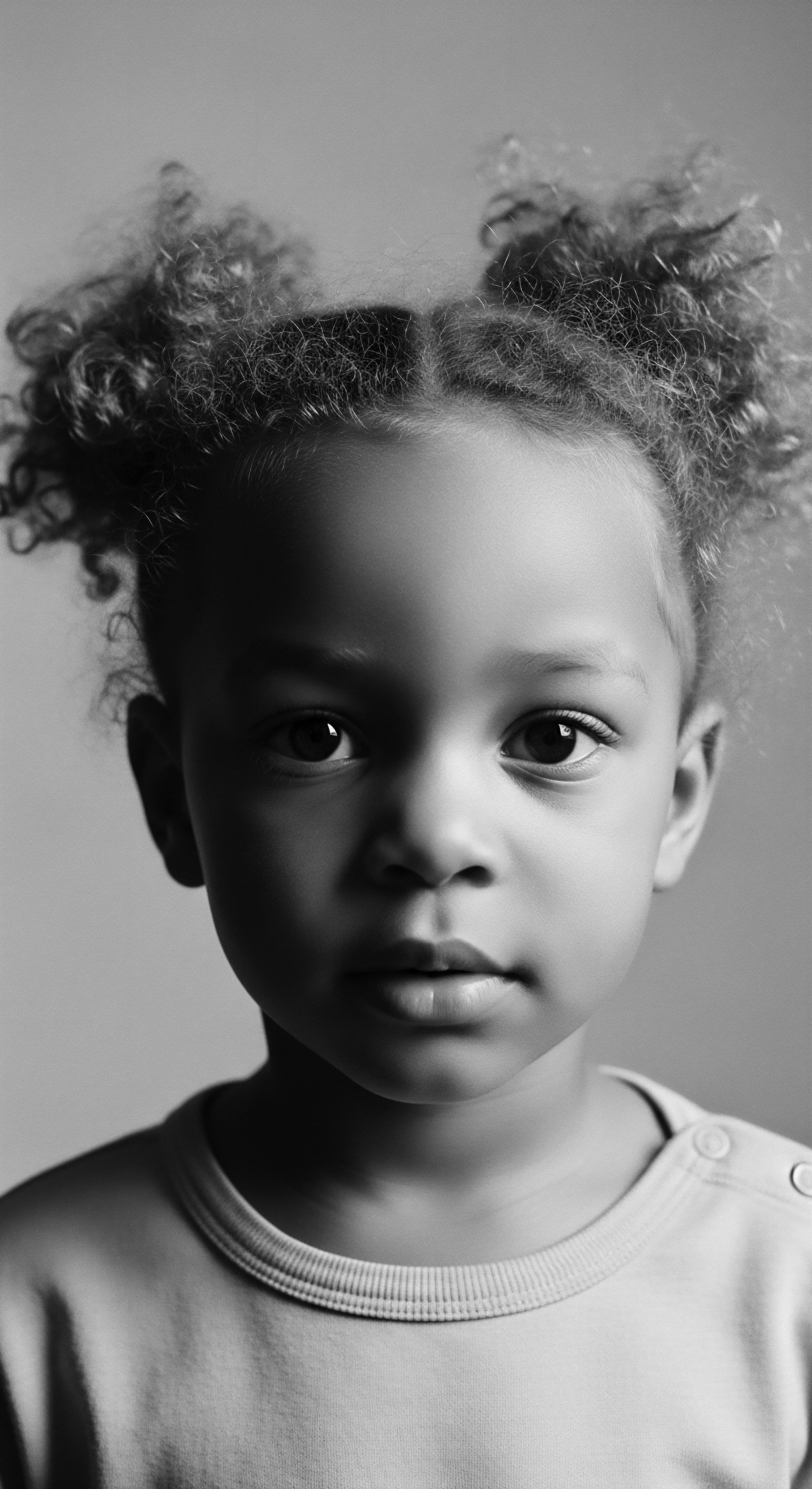
Echoes of Ancestral Care in Modern Routines
The continuity between ancient wisdom and contemporary hair care for textured hair is striking. Many ingredients and techniques gaining popularity today have deep roots in ancestral practices.
| Ancestral Ingredient/Practice Shea Butter (Vitellaria paradoxa) |
| Traditional Application for Integrity Used widely across West Africa for moisturizing, sealing, and softening hair, often as a base for other treatments. |
| Modern Scientific Understanding/Benefit Rich in fatty acids and vitamins (A, E, F), it acts as an emollient, sealing moisture into the hair shaft and protecting it from environmental stressors. |
| Ancestral Ingredient/Practice Chebe Powder (from Chad) |
| Traditional Application for Integrity Applied as a paste to hair, then braided, to prevent breakage and aid length retention. |
| Modern Scientific Understanding/Benefit Believed to fill hair shaft spaces and seal the cuticle, reducing friction and mechanical damage. Its effectiveness is linked to moisture retention. |
| Ancestral Ingredient/Practice Baobab Oil (Adansonia digitata) |
| Traditional Application for Integrity Revered in Africa, its oil used for moisturizing dry, brittle hair, strengthening strands, and repairing split ends. |
| Modern Scientific Understanding/Benefit High in vitamins (A, D, E, F) and omega fatty acids, it improves hair elasticity and prevents breakage. Antioxidants offer environmental protection. |
| Ancestral Ingredient/Practice African Hair Threading (e.g. Irun Kiko by Yoruba people) |
| Traditional Application for Integrity Sections of hair wrapped with flexible threads (wool, cotton) to protect and style, dating back to the 15th century. |
| Modern Scientific Understanding/Benefit A protective style that minimizes manipulation, stretches hair gently, and helps retain length by reducing exposure to damaging elements. |
| Ancestral Ingredient/Practice Rooibos Tea (Aspalathus linearis) |
| Traditional Application for Integrity Consumed as a beverage, but also used topically for hair health in South Africa. |
| Modern Scientific Understanding/Benefit Packed with antioxidants, zinc, and copper, it supports scalp health, improves blood circulation to follicles, and can reduce hair fall. |
| Ancestral Ingredient/Practice These examples highlight the continuous thread of wisdom, where ancient practices intuitively addressed the specific needs of textured hair, often validated by contemporary scientific analysis. |
The recognition of these traditional ingredients and methods in modern hair care products speaks to a re-evaluation of what constitutes effective care. It is a movement that honors the ingenuity of those who came before, validating their deep connection to the earth and its offerings for holistic well-being.
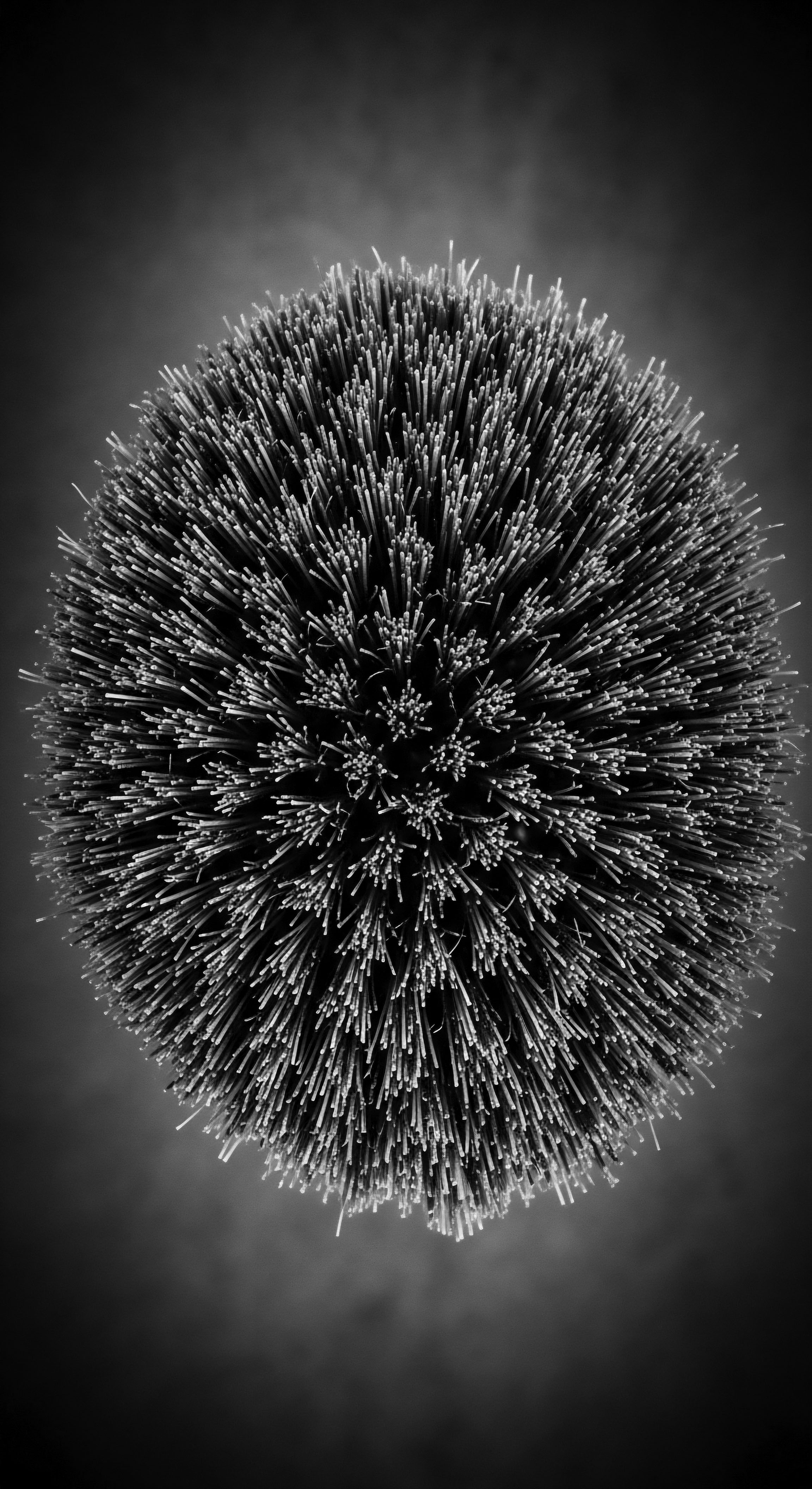
The Historical Impact on Hair Integrity
The journey of textured hair through history is not without its trials. The transatlantic slave trade and subsequent colonial influences had a devastating impact on the cultural significance and physical integrity of African hair. Enslaved Africans were often stripped of their hair tools and accessories, their heads shaved as an act of dehumanization and cultural erasure. This forced separation from ancestral practices and the harsh realities of enslavement led to hair becoming matted, tangled, and damaged.
The imposition of Eurocentric beauty standards further complicated the perception and care of textured hair. Straight hair became associated with privilege and acceptance, pushing many to chemically alter their hair, often with damaging consequences. Early straightening methods, including hot combs and lye-based relaxers, frequently caused chemical burns and long-term scalp damage.
This historical pressure created a dichotomy where the pursuit of societal acceptance often came at the cost of hair integrity and health. The concept of “good hair” became intertwined with proximity to European hair textures, undermining the intrinsic value of coily and kinky strands.
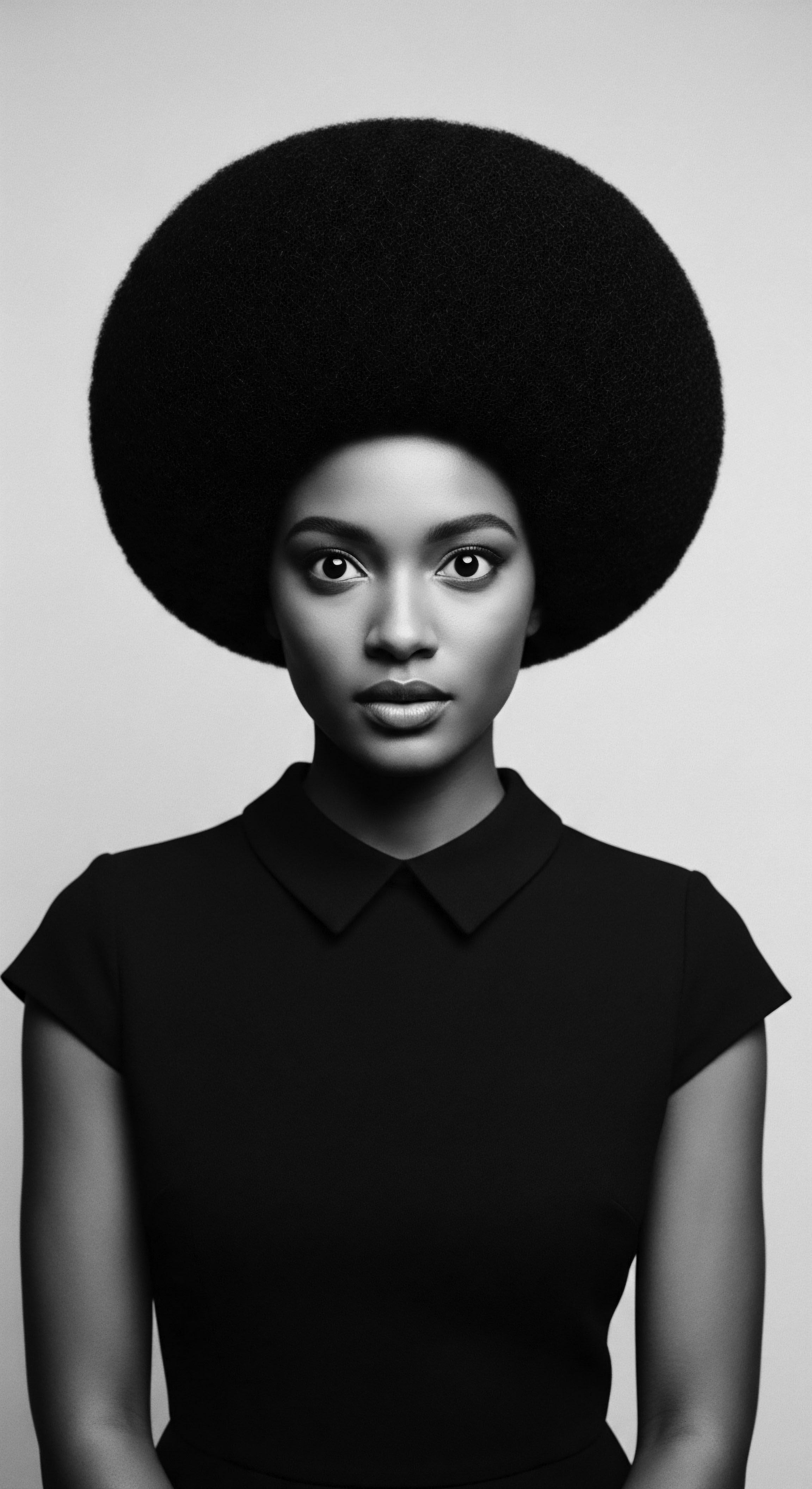
Academic
The academic Interpretation of Textured Hair Integrity moves beyond simple description, positioning it as a complex construct that bridges elemental biology, historical sociology, and cultural epistemology. It signifies the sustained structural, chemical, and aesthetic soundness of coily, kinky, and curly hair fibers, critically evaluated not only through biophysical metrics such as tensile strength, elasticity, and moisture content but also through its enduring cultural symbolism and the legacy of care practices across the African diaspora. This scholarly approach necessitates an examination of how societal forces, particularly those stemming from colonial legacies, have historically shaped and, at times, undermined the very perception and physical state of textured hair integrity. The academic lens reveals that integrity is not merely an intrinsic quality but a dynamic interplay between biological predisposition, environmental factors, and profound socio-cultural pressures.
The Delineation of Textured Hair Integrity at this level requires a critical engagement with its historical context, particularly the ways in which it has been pathologized or devalued. The coiled morphology of Afro-textured hair, characterized by its elliptical cross-section and numerous twists per centimeter, inherently presents a greater susceptibility to mechanical damage and breakage compared to straighter hair types. This inherent fragility, however, was traditionally managed through protective styling and a rich pharmacopoeia of natural emollients and fortifiers, safeguarding the hair’s natural state. The disruption of these ancestral systems of care, beginning with the transatlantic slave trade, initiated a prolonged period where the preservation of textured hair integrity became a silent act of resistance or, conversely, a casualty of imposed beauty norms.
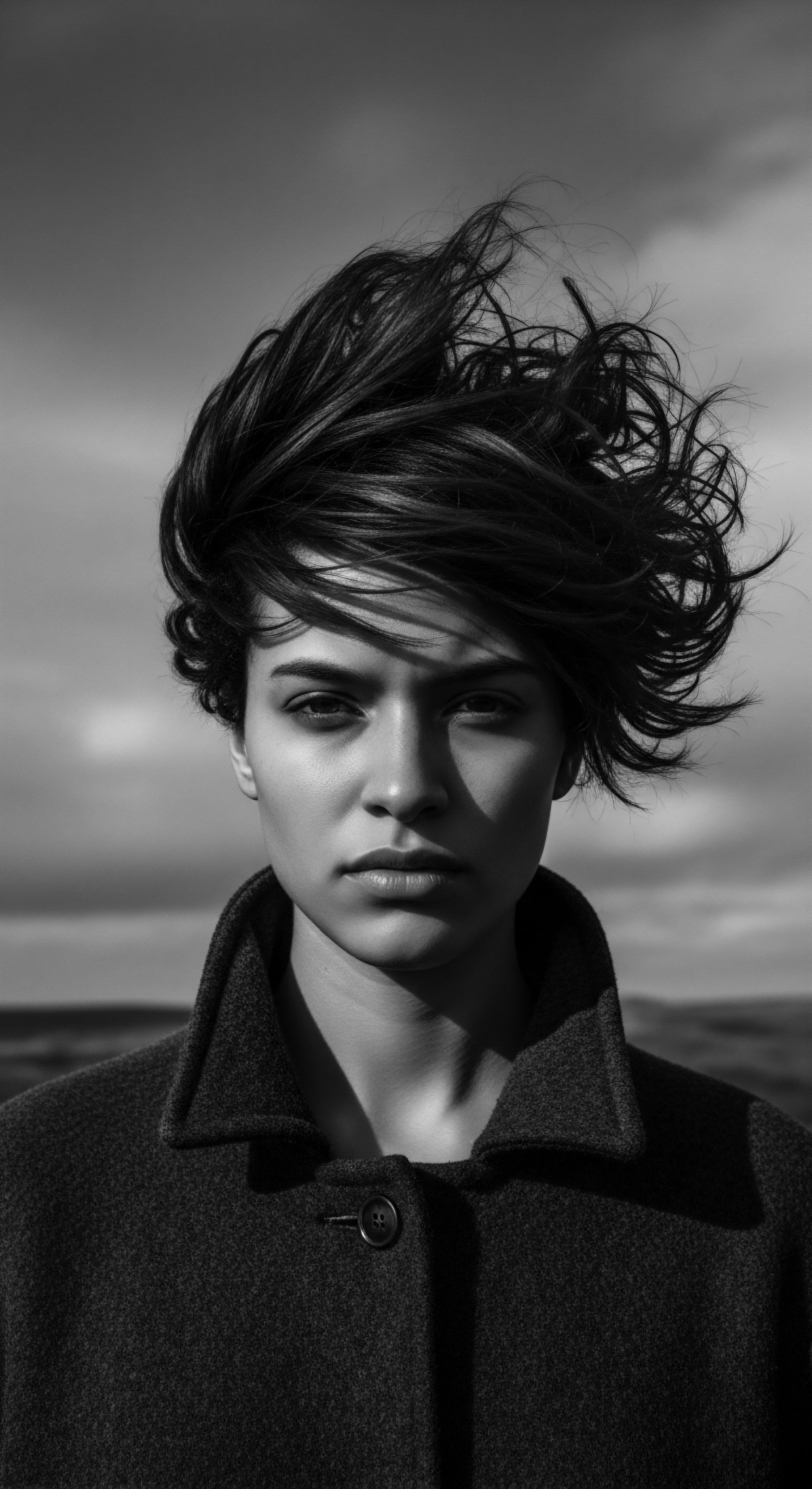
The Socio-Historical Construction of Hair Integrity
The concept of “integrity” for textured hair cannot be divorced from its socio-historical construction, particularly within the context of colonialism and its enduring aftermath. Pre-colonial African societies celebrated hair as a potent symbol of identity, status, and spiritual connection, with intricate styles signifying a person’s community role, marital status, or even their spiritual beliefs. The systematic shaving of heads during the transatlantic slave trade was a deliberate act of cultural annihilation, severing physical ties to heritage and disrupting the generational transmission of hair care knowledge. This traumatic rupture profoundly impacted the ability to maintain hair integrity, as enslaved individuals were denied access to traditional tools, ingredients, and the time necessary for elaborate care rituals.
Following emancipation, the societal pressure to conform to Eurocentric beauty ideals persisted, linking straight hair to economic opportunity and social acceptance. This era saw the widespread adoption of chemical relaxers and hot combs, tools designed to forcibly alter the natural curl pattern. These chemical and thermal processes, while achieving temporary straightening, often caused significant physical damage to the hair shaft and scalp, including chemical burns, breakage, and hair loss. The physical compromise of hair integrity became a direct consequence of a social system that devalued natural Black hair.
The historical subjugation of textured hair through imposed beauty standards reveals how societal pressures directly compromised its physical and cultural integrity.
A telling instance of this historical compromise is documented in studies examining the long-term health implications of chemical hair straightening. Research conducted by the Boston University Black Women’s Health Study, following over 59,000 self-identified African American women for more than 25 years, found that frequent and long-term use of lye-based hair straightening products was associated with an increased risk of certain health issues. Specifically, the study revealed that Black women who used lye-based relaxers at least seven times a year for 15 or more years experienced an approximately 30 percent increased risk of estrogen receptor positive breast cancer compared to less frequent users (Coogan et al. 2021).
This statistic underscores the profound, often hidden, toll that historical pressures to conform to Eurocentric beauty standards have taken on the physical integrity and holistic well-being of Black women, extending far beyond cosmetic concerns to serious health outcomes. It highlights how the quest for a culturally imposed aesthetic directly undermined the physical soundness of the hair and the health of the individual.
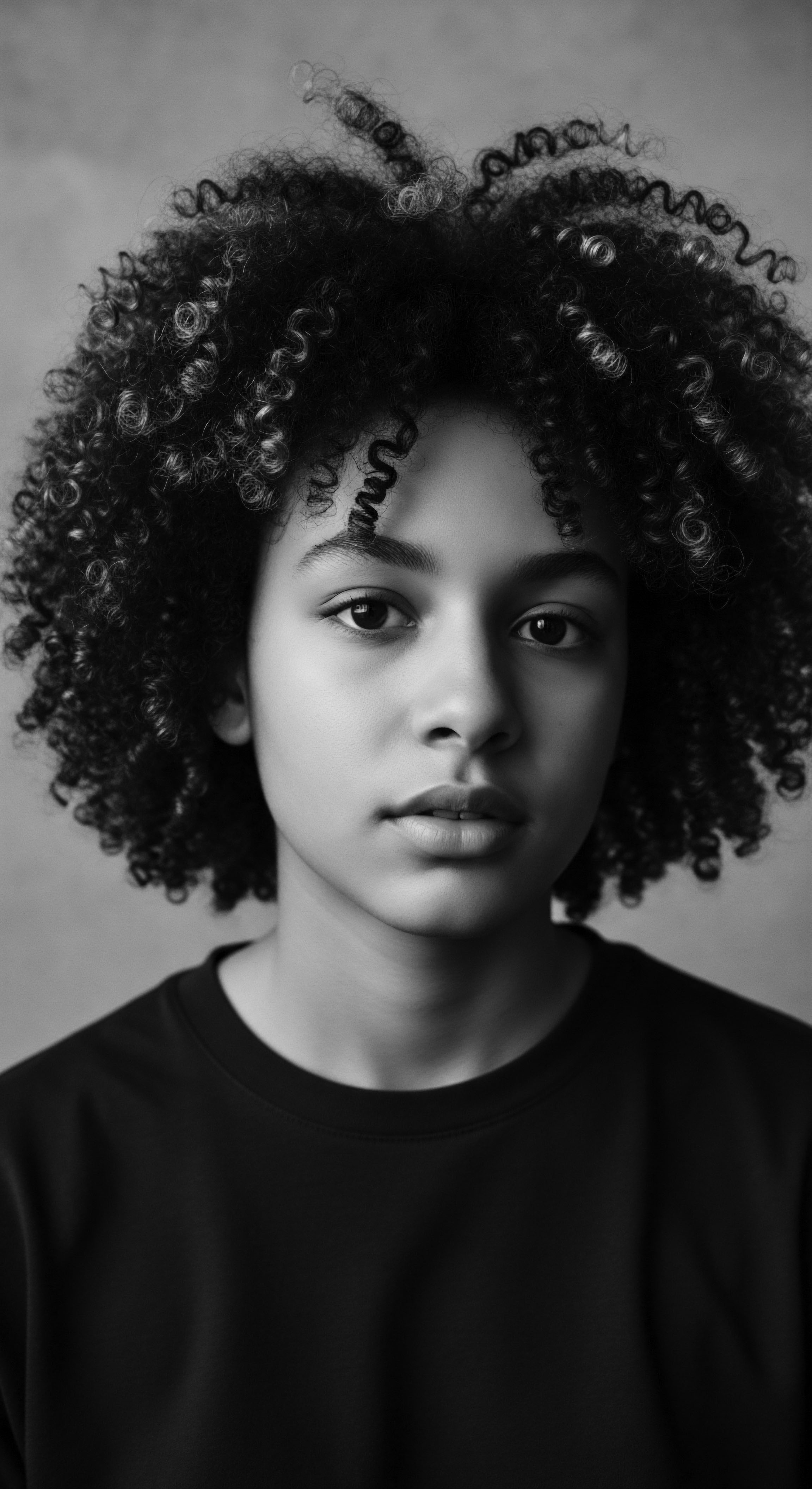
Ancestral Epistemologies and Modern Validation
The academic understanding of Textured Hair Integrity also necessitates an exploration of the epistemologies that underpinned ancestral hair care. Rather than a singular, linear scientific method, traditional knowledge systems often relied on communal observation, generational transmission, and a holistic perspective that viewed hair as intrinsically linked to the body, spirit, and community. This contrasts with a modern reductionist approach that isolates hair biology from its cultural context.
Consider the profound wisdom embedded in traditional African phytocosmetics. Ethnobotanical studies have begun to systematically document the diverse array of plants historically utilized for hair care across the continent. For example, a review compiling 68 African plant species used for hair care identified numerous applications for alopecia, dandruff, and general hair conditioning. These plants, such as Moringa (Moringa oleifera) for nutrient provision and scalp health, and Hibiscus (Hibiscus sabdariffa) for strengthening roots and reducing thinning, possess biochemical properties that modern science is only now fully elucidating.
The efficacy of practices like African hair threading, known as “Irun Kiko” among the Yoruba people, demonstrates an advanced understanding of mechanical protection. This method, involving the wrapping of hair sections with flexible threads, minimizes manipulation and stretches the hair gently, promoting length retention and reducing breakage. Modern trichology now validates these techniques as effective protective styles, recognizing their ability to shield the hair from environmental damage and mechanical stress. The continuity of these practices, even in the face of historical disruption, represents a powerful act of cultural preservation and a testament to the enduring validity of ancestral knowledge in maintaining Textured Hair Integrity.
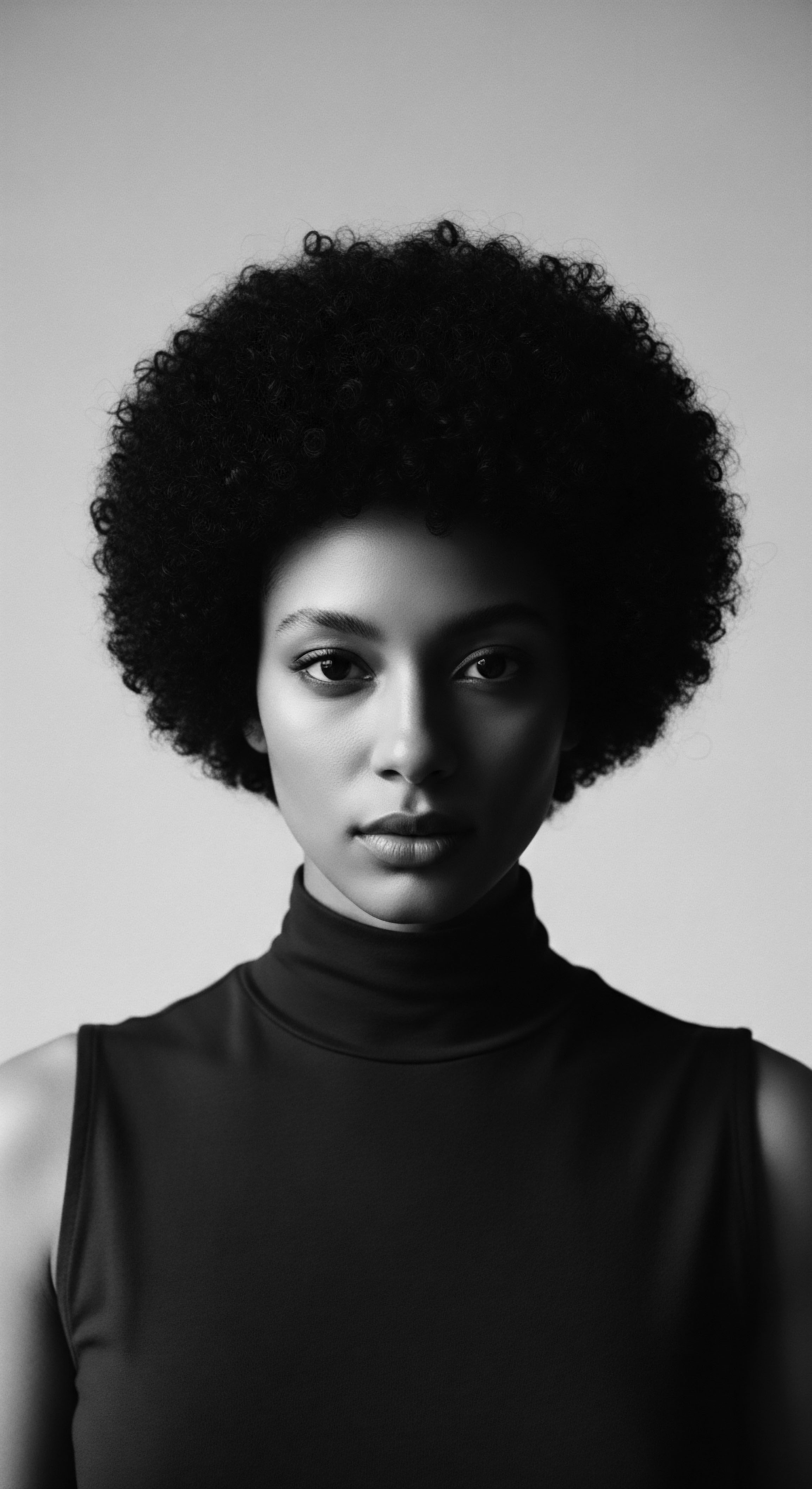
Challenges to Integrity and Pathways to Reclamation
Despite growing awareness and the natural hair movement, textured hair integrity continues to face contemporary challenges. Hair discrimination, rooted in historical biases, persists in workplaces and educational institutions, often leading to policies that penalize natural hairstyles. This societal pressure can subtly or overtly compel individuals to alter their hair, potentially compromising its integrity. The ongoing fight for legislation like the CROWN Act, which prohibits discrimination based on hair texture or protective styles, underscores the continued struggle for the acceptance and celebration of natural hair.
The academic examination of Textured Hair Integrity therefore extends to its reclamation as a form of resistance and self-affirmation. The resurgence of natural hair movements globally represents a collective endeavor to restore the physical, psychological, and cultural soundness of textured hair. This involves:
- Re-Engagement with Ancestral Practices ❉ A conscious return to traditional ingredients and styling methods, such as utilizing plant-based oils and butters or embracing protective styles like locs and cornrows, which inherently support hair health.
- Challenging Eurocentric Beauty Norms ❉ Actively dismantling the pervasive idea that straight hair is the sole standard of beauty or professionalism, fostering a broader appreciation for the diverse forms of textured hair.
- Promoting Scientific Literacy ❉ Bridging the gap between ancestral wisdom and modern scientific understanding, demonstrating how traditional practices often align with contemporary trichological principles for optimal hair care.
The pursuit of Textured Hair Integrity, from an academic perspective, is thus a multi-layered endeavor ❉ a scientific pursuit of optimal hair health, a historical reclamation of cultural heritage, and a social justice movement advocating for equity and self-determination in beauty. It signifies a profound journey toward holistic well-being, where the health of the strand mirrors the health of the spirit and the strength of a community.
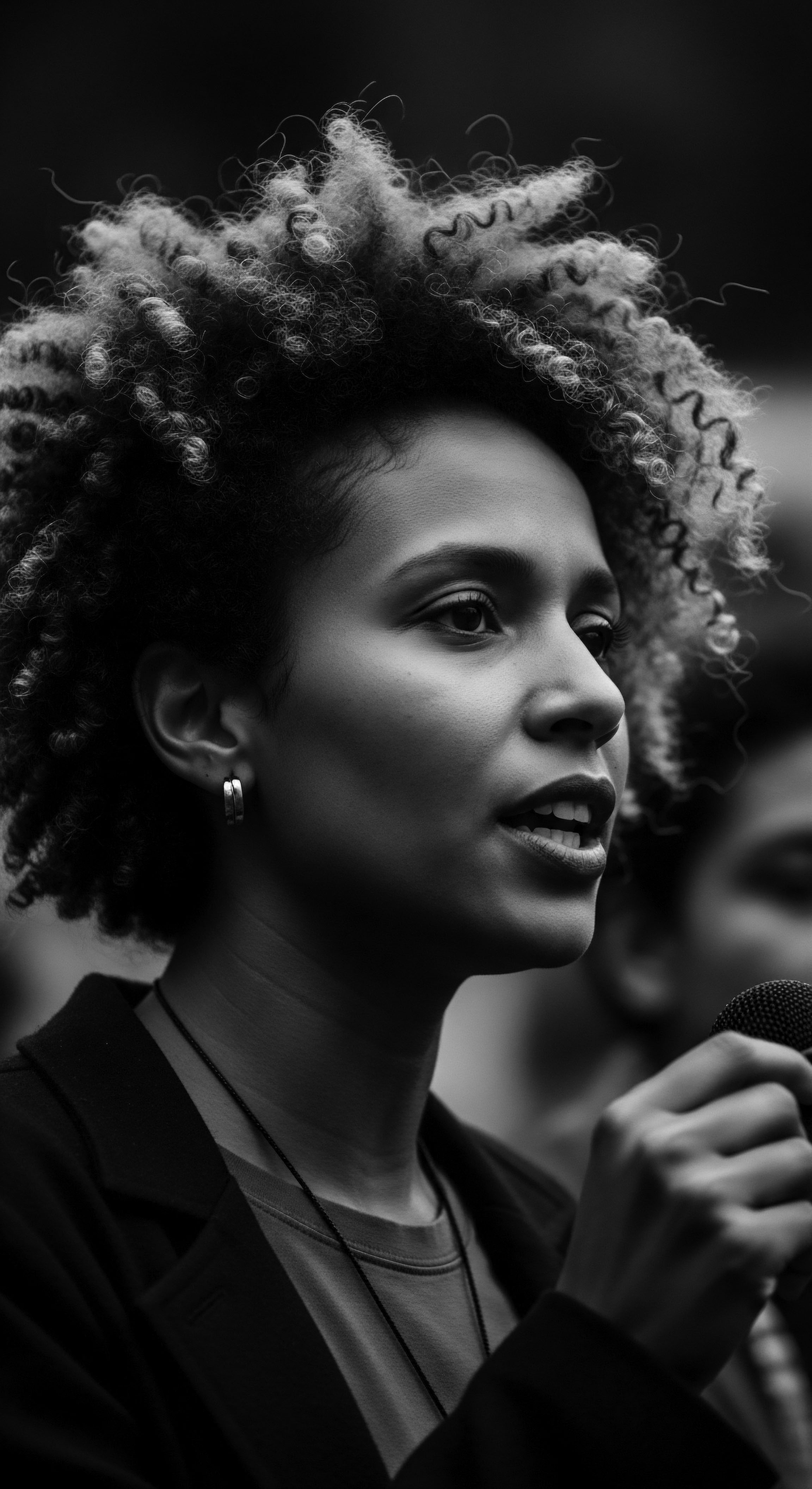
Reflection on the Heritage of Textured Hair Integrity
As we close this contemplation on Textured Hair Integrity, a deep sense of connection to the past settles, like the gentle settling of dust after a long journey. The journey of textured hair is not merely a biological phenomenon; it is a profound testament to the resilience of spirit, the continuity of ancestral wisdom, and the enduring power of identity. The ‘Soul of a Strand’ ethos reminds us that each coil and curl carries the whispers of generations, a living archive of joy, struggle, and unwavering beauty. The pursuit of integrity in textured hair, then, becomes a sacred act of remembrance, a vibrant conversation between what was, what is, and what will continue to be.
The heritage woven into every aspect of textured hair care stands as a powerful counter-narrative to centuries of imposed ideals. It is a story told through the hands that braided, the oils that nourished, and the voices that sang praises over a crown of coils. This heritage is not static; it breathes, adapts, and reasserts itself in contemporary expressions of self. The decision to honor one’s natural texture is more than a personal preference; it is a conscious acknowledgment of a rich, unbroken lineage, a celebration of innate perfection that requires no external validation.
Looking forward, the evolving significance of Textured Hair Integrity lies in its capacity to serve as a beacon for holistic wellness. It compels us to consider how the physical health of our hair mirrors our emotional and spiritual well-being, urging us to seek harmony in all aspects of our lives. By understanding the profound historical context of textured hair, we gain not only knowledge but also a deeper reverence for its unique characteristics and the wisdom of those who preserved its vitality through time. The ongoing dialogue between scientific discovery and ancestral practices offers a pathway to care that is both deeply informed and profoundly respectful, ensuring that the legacy of Textured Hair Integrity continues to inspire and uplift for all time.
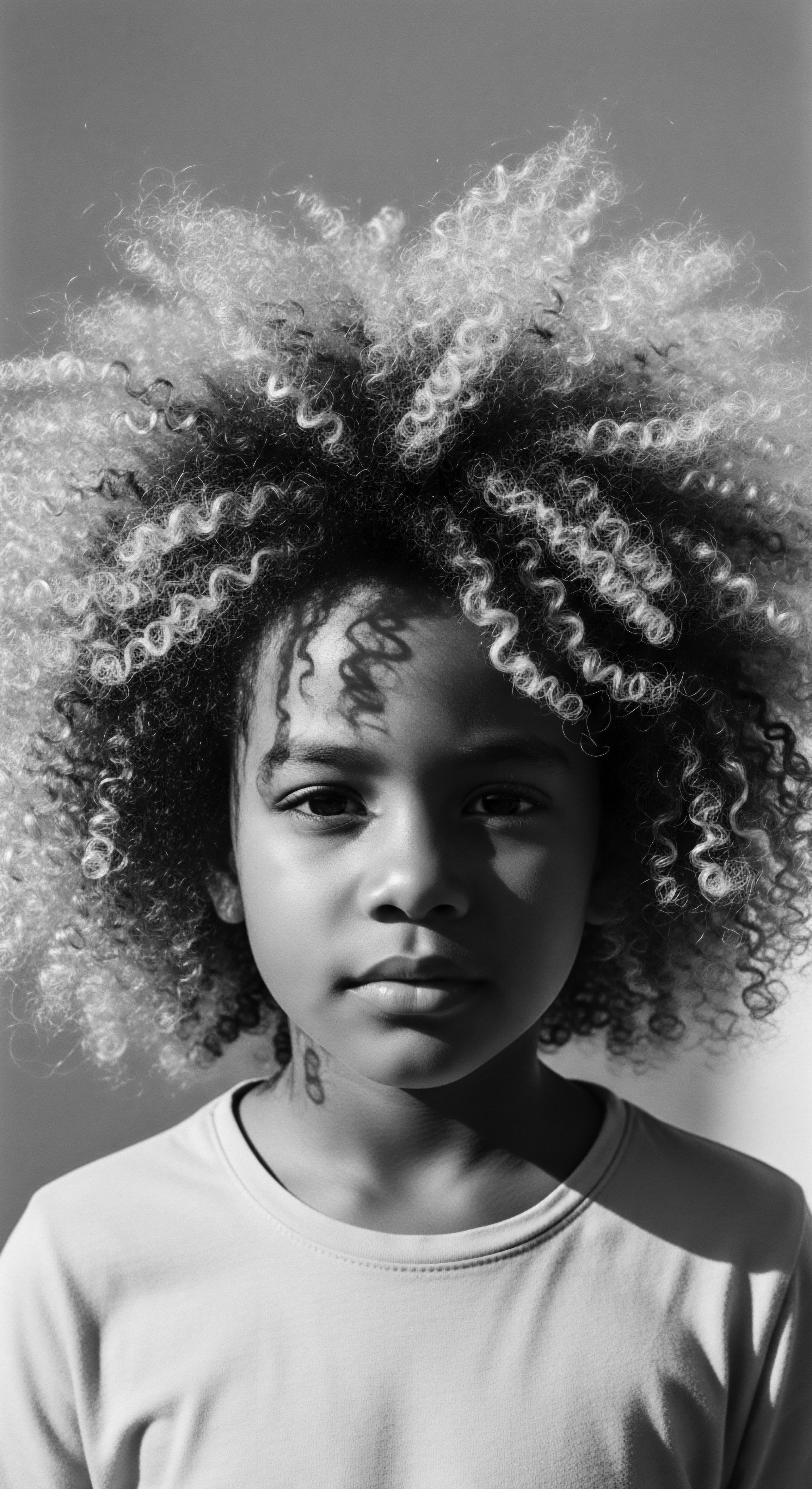
References
- Coogan, P. F. et al. (2021). Hair relaxer use and breast cancer risk in the Black Women’s Health Study. Carcinogenesis, 42(11), 1335–1343.
- Gathers, D. R. (2015). Hair vs health in African American women. Dermatology Times, 36(1), 1-3.
- Loussouarn, G. et al. (2005). African hair morphology ❉ Macrostructure to ultrastructure. International Journal of Dermatology, 44(S1), 2-6.
- Mapunya, M. B. et al. (2012). Ethnobotanical survey of medicinal plants used for skin and hair care in the Vhavenda region of South Africa. Journal of Ethnopharmacology, 141(3), 973-982.
- Oforiwa, A. (2023). The History and Culture of African Natural Hair ❉ From Ancient Times to Modern Trends. AMAKA Studio .
- Tharps, L. M. & Byrd, A. (2001). Hair Story ❉ Untangling the Roots of Black Hair in America. St. Martin’s Press.
- Warra, A. A. (2022). Ethnobotanical Advancements in Contemporary Skincare. In Ethnobotany ❉ A Comprehensive Review (pp. 51-68). IGI Global.
- Wilcox, A. (2017). Femininity, Hair Relaxers, and the Impact of Beauty Standards on Black Women’s Health. Columbia Undergraduate Journal of Public Health, 1(1), 1-10.
- Yetein, M. H. et al. (2013). Ethnobotanical study of medicinal plants used for the treatment and care of hair in Karia ba Mohamed (Northern Morocco). Journal of Ethnopharmacology, 146(1), 154–163.
